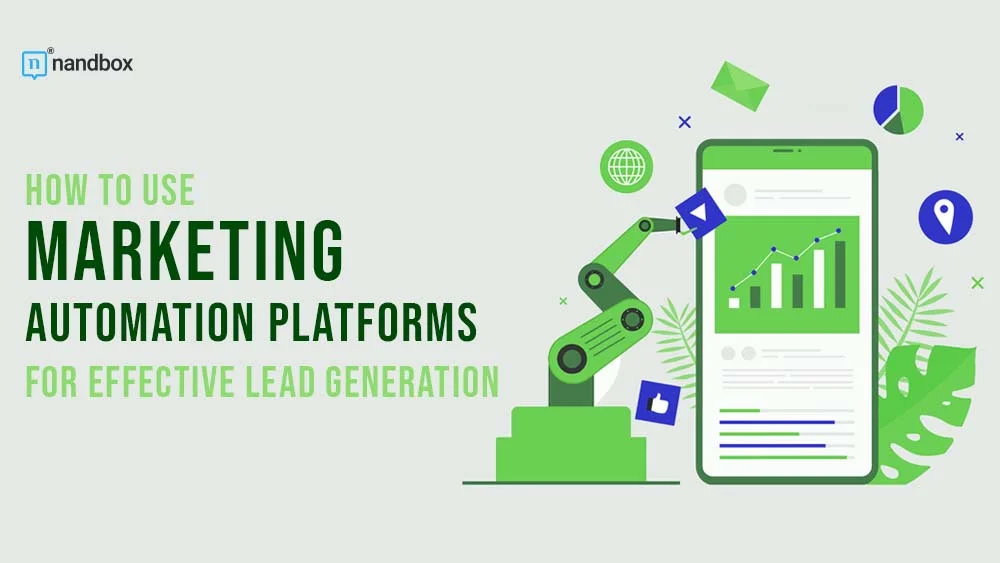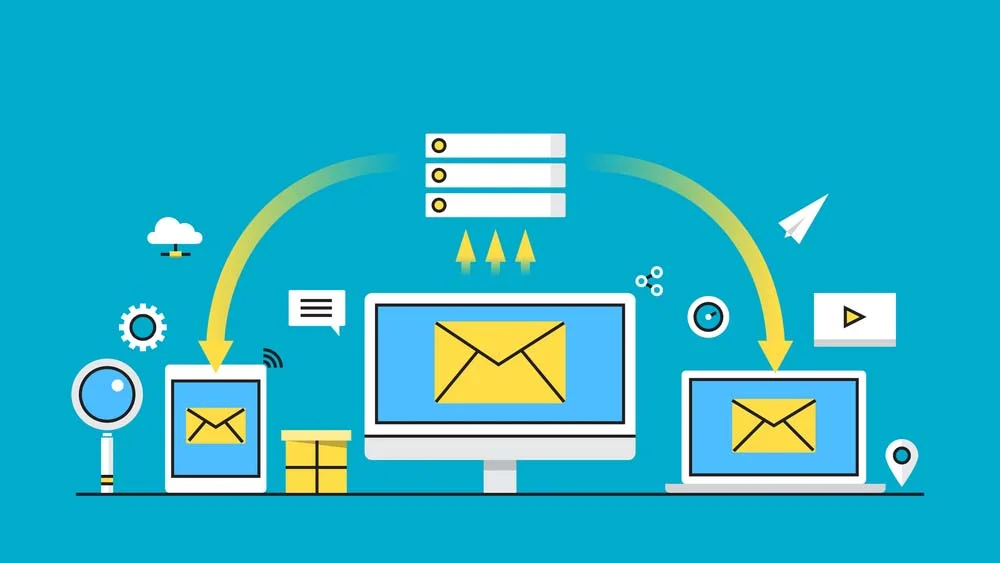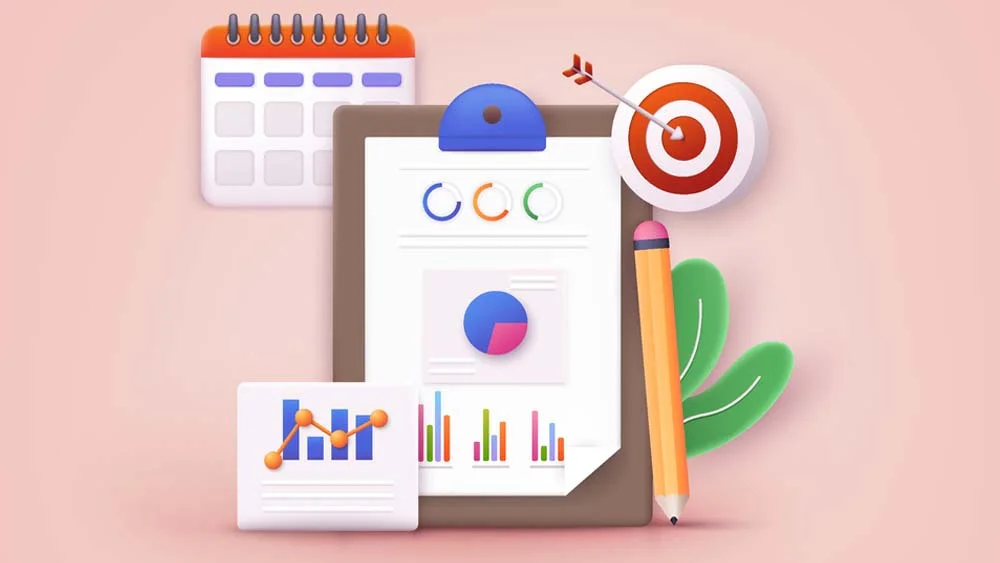How to use Marketing Automation Platforms for Effective Lead Generation
Did you know that in 2021, 76% of companies will use marketing automation to generate leads?
And in 2023, the trend will have picked up exponentially
Before we dive into the exciting stuff, let’s cover the basics.
What is Marketing Automation?
Marketing automation refers to leveraging software to automate a few aspects of your marketing and lead generation process. It enables businesses to ensure higher leads, conversions, and sales without investing much time, effort, or money.
But why go through so much trouble to generate leads?
Lead generation is crucial for organizations. Why? Lead generation boosts revenue; it’s really that simple.
Let’s Take a Quick Example:
Say you emailed a potential customer about a new shoe range that they find exciting. So much so that they click on the subscribe button and opt-in for updates from your brand. That’s the path to marketing automation!
It seems too simple, doesn’t it?
Well, once a potential customer subscribes to updates from a brand, the ball is in your court. You can send them personalized emails to increase their interest in your service or product. After that, you can automate converting them based on their behavior and actions.
The above example is just one of many ways you can ensure automated lead generation and, as a result, increase revenue. Now that we have a basic understanding of the concept, let’s dive a little deeper.
The 4 Ls to Creating an Effective Lead Generation Strategy
You can’t connect with your target audience without understanding their wants and needs. To make an impact on a customer, it’s crucial to:
- Know your target audience
- Create buyer personas
- Define characteristics for each persona
With a detailed analysis of your target audience, it’s easy for you to implement automated lead-generation practices. This includes optimizing lead generation forms to capture valuable customer information efficiently.
Once you have in-depth knowledge about your target audience, the next step is to create an effective lead-generation strategy.
Yes, generating leads is challenging. However, if done right, you can yield excellent results!
First things first. In 2023, ditch the sales pitch. Your target audience doesn’t want someone to sell them the idea of why they need a product/service – you have to earn their time.
How Do We Do That? You Catch Their Attention!
An effective lead generation process has four phases, as illustrated below.
In this blog post, we focus on the first two funnels, i.e., attract and convert. Gaining your target audience’s interest is the first hurdle that you need to overcome. Here are the four L’s of lead automation that get you closer to creating a solid strategy.
Lead Capture
Prospecting and lead capture are the primary steps in sales pipeline stages. To get started, focus on the lead-capturing process. Check what and how much information you collect from your audience, especially when they visit your website. Make this process simple, easy, and convenient to increase conversions.
Lead Magnet
Know when to ask your target audience for information. For example, it’s too early if you’re asking visitors for information right when they open your website. Choose the most valuable content you can share, such as an ebook, webinar, etc., to convert them to a potential customer. You can also add a QR Code on your website or product packaging. When scanned, it can lead people to a form where they can get more information.
Whether it’s a landing page or an email, it’s crucial to share content your target audience can’t ignore.
Landing Page
Optimise! In 2023, you must have a website with attractive landing pages that aren’t loaded with information. Keep it simple, classy, and the user experience appealing. The key is to say a lot with the fewest words possible.
Lead Scoring
With a solid strategy, you will get a lot of quality traffic—and, sometimes, poor quality traffic too. That’s why it’s critical to score each website visitor who converted so that you can prioritize and target them accordingly.
Lead scoring lets you determine the marketing channels and programs you should leverage to generate high-quality leads.
But the question still remains: how do we use marketing automation platforms to generate leads?
Increasing Leads with Marketing Automation Platforms (With Examples & Best Practices!)
Marketing automation platforms enable businesses to leverage technology to automate various aspects of their lead-generation process. A few factors you can automate via these tools for lead generation are illustrated below.
There are various ways to leverage marketing automation platforms to generate leads, such as:
Automated Email Campaigns
Email automation enables you to convert leads into customers, delight existing customers, and encourage various activities, such as upsells, additional purchases, higher product adoption, etc. The most effective way to leverage marketing automation for effective lead generation is by creating a simple content-to-email workflow that warms up readers and qualifies them as prospects.
Here’s how you can automate email workflows efficiently!
- Choose a good marketing automation platform that offers email automation as a feature
- Identify the target audience for your email campaigns
- Determine the campaign’s goal
- Define the enrollment criteria
- Choose the processes you want to automate
- Design the assets of your email campaign
- Cross-check your email automation setup and test it, if possible
- Make the workflow live and monitor the progress
One great example of an automated email campaign is Nissan. Most car companies’ primary profit source is maintenance – a service highly dependent on a customer following the vehicle’s service schedule.
As Nissan keeps a record of each car purchase date and who bought it, they have set up automatic email campaigns to remind their customers when their vehicle is due for maintenance.
With this, Nissan checks two boxes:
- Their customers feel valued as the company goes the extra mile for them
- Ensures their customers return to complete their service (Result = more profit!)
A/B Testing and Optimization
Testing and optimizing your website and emails is crucial to seeing what’s working as well as what’s not working with your campaigns. You can get a lot of insights into your customer behavior, likes, and dislikes through A/B testing. It also gives you the opportunity to optimize your website and emails to further increase leads and sales. Additionally, automating sales enablement streamlines your processes, making it easier to nurture leads and close deals
A few factors in your email you can test and optimize often include:
- Copy
- Design
- Subject line
- Headlines
- Offers
- CTAs
- Send time and frequency
In your website, the elements you can test and optimize often include:
- Design
- Headlines
- Landing pages
- CTAs
- Chatbots
- Forms
Best Practices for Effective Lead Generation with Marketing Automation Platforms
There is much more to marketing automation than the technical aspects. In order to completely streamline all your digital marketing efforts, there are a few best practices you can follow. In this section, we list out 7 best practices for ensuring lead generation with marketing automation platforms.
-
Define Your Goals
Every marketing campaign can only be successful if it has a set goal. Make sure you create accurate and actionable goals. For example, it’s better to say “increase leads by 60%” than keep it vague by saying “Increase leads.”
Do an analysis and present your goals to your stakeholders with real numbers to justify the investment needed to get the desired results. Using goal-tracking platforms can help you share these goals and stay updated on your progress.
-
Promote Team Collaboration
Before you start implementing your new marketing automation strategy, it’s crucial to collaborate with the team members you’ll work with. This way, all your team members can discuss, understand, and optimize the strategy beforehand. With everyone on the same page, the success of your marketing automation strategy increases exponentially.
-
Process Visualizations: YES!
One picture is worth a thousand words! Instead of explaining your marketing automation workflow in long, boring presentations – simply illustrate it with a detailed diagram. With visualizations, you can easily attract attention and keep the meetings alive; while putting across your objectives efficiently and effectively.
-
Build a Solid Content Strategy
Building a content library is crucial for lead generation. Create a strong, relevant, engaging, and appealing message that’s designed to reach your target audience at all stages of the customer lifecycle. It’s crucial to create a content strategy for the complete cycle and not only focus on the first two stages – i.e., solely lead generation. Nurturing leads is as important as generating leads for assured conversions and repeated sales.
-
Plan for a Slow Rollout
The top marketing automation companies stagger their launches. You know why? Here’s their secret: they test early and optimize the next program blocks! This way, they can practically guarantee the success of their campaigns, as they’re optimized completely to fit the target audience’s needs and wants.
So, always plan for a slow rollout and stagger your lanches. Make sure you focus on A/B testing and optimizing your campaigns so as to increase your chances of success!
-
Remember: Analyze On The Go!
It’s crucial to check what’s working for you and what’s not. Throughout the campaign, analyze on the go and know which things are essential for your campaign’s success. Make adjustments and changes to your campaigns from time to time to make sure your business grows.
Marketing Automation Platform’s Impact On Lead Generation Initiatives
Lead generation is probably the most important aspect of business growth. Without lead generation, your business will take a lot of time and effort to attract new customers and increase sales.
Marketing automation platforms replace manual processes, enabling you to collect all the essential information to identify the best, high-quality leads. They bring in the efficiency, accuracy, and speed that cannot be achieved through performing these tasks manually.
That said, marketing automation platforms are the key to increasing leads and sales for businesses. It gives you a deep dive into your target audience’s mindset and enables you to design campaigns that push them into availing of a service/buying a product from you.
It’s the constant information that you can get through automation that enables you to optimize campaigns on the go. This also improves customer retention and relationships and, in the long run, enriches your brand name and recognition.








